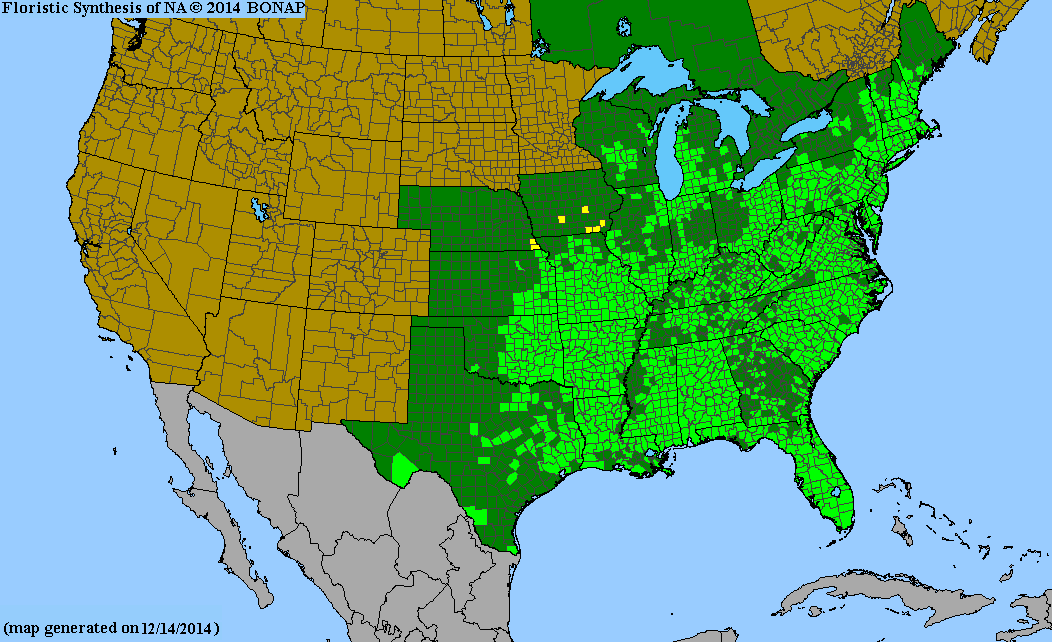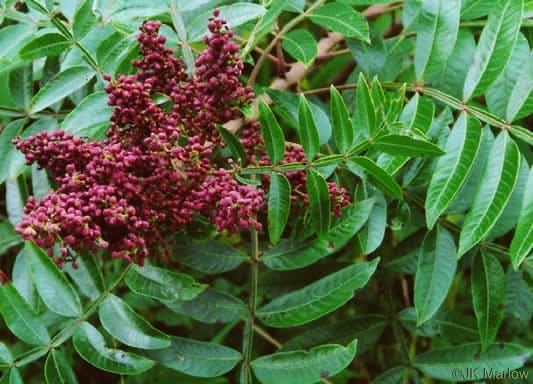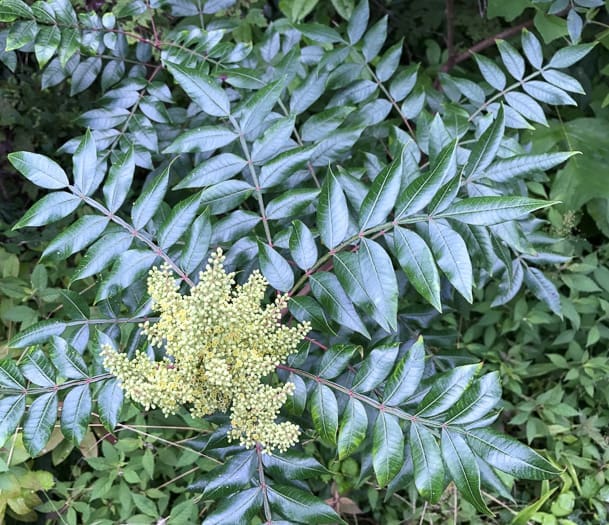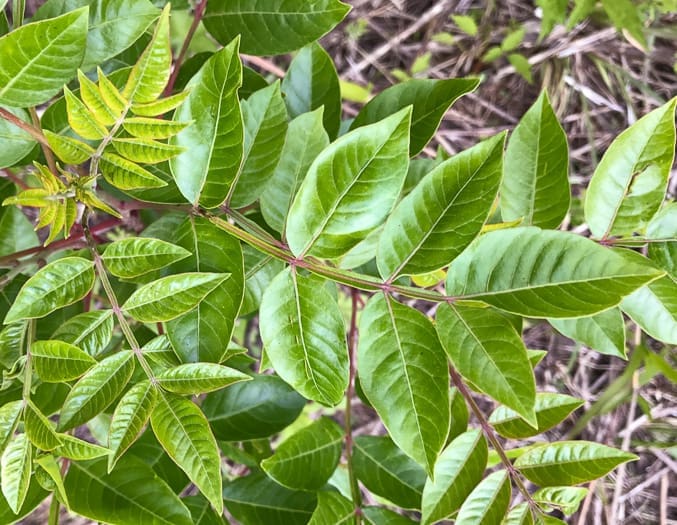Anacardiaceae
winged sumac
Rhus copallinum
Synonyms
Schmaltzia copallina
Sumacus copallina
Toxicodendron copallinum
Other Common Names
shining sumac, dwarf sumac, flameleaf sumac
Plant Type
Small Tree/Large Shrub (10-25 ft)
Typical Size
7-15 ft. tall
10-20 ft. wide
Tolerant of
Drought
Inolerant of
Poorly Drained Soil
Propagation
By seed, By cutting, By division
Plant Propagation Notes
Seed should be scarified and planted up to 3/4″ deep. Easily divided and transplanted. Semi-hardwood cuttings should be cut in summer or fall.
Plants/Diseases
No significant pest or disease problems. May experience leaf spot or rust, scale, aphids, or mite infestations.
Wildlife Benefits
Nectar/pollen source for pollinating insects, Host plant for butterfly larvae, Fruit/seeds for birds
Leaves
Deciduous leaves are compound and alternate. Central leaf stalk is winged. Each leaflet is lanceolate with entire leaf margins and slightly hairy on the undersides. Each leaf can grow 3-6 inches long and up to 3 inches wide.
Flowers
Large panicles of white to green to yellow star-shaped flowers with 4-5 petals.
Fruit
Flowers give way to 1/4″ red/burgundy drupes that are covered in short hairs and persist through the winter.
Bark
Bark is light brown and smooth with lenticels when young. Bark turns scaly with maturity.
Toxicity
No known toxicity.

USDA Hardiness Zones
4, 5, 6, 7, 8, 9
Light Exposure
Full Sun, Part Sun/Shade
Soil Moisture
Dry, Medium, Moist
Soil Drainage
Well-drained
Soil pH
Acidic (less than 6.0), Neutral (6.0-8.0)
Native in South Carolina?
Yes
Plant Native Habitat
Dry woodlands, hillsides, and prairies.
Global Conservation Status (NatureServe)
Secure (G5)
Federal Conservation Status (USFWS)
Not Listed
Distribution Notes
Common throughout SC



